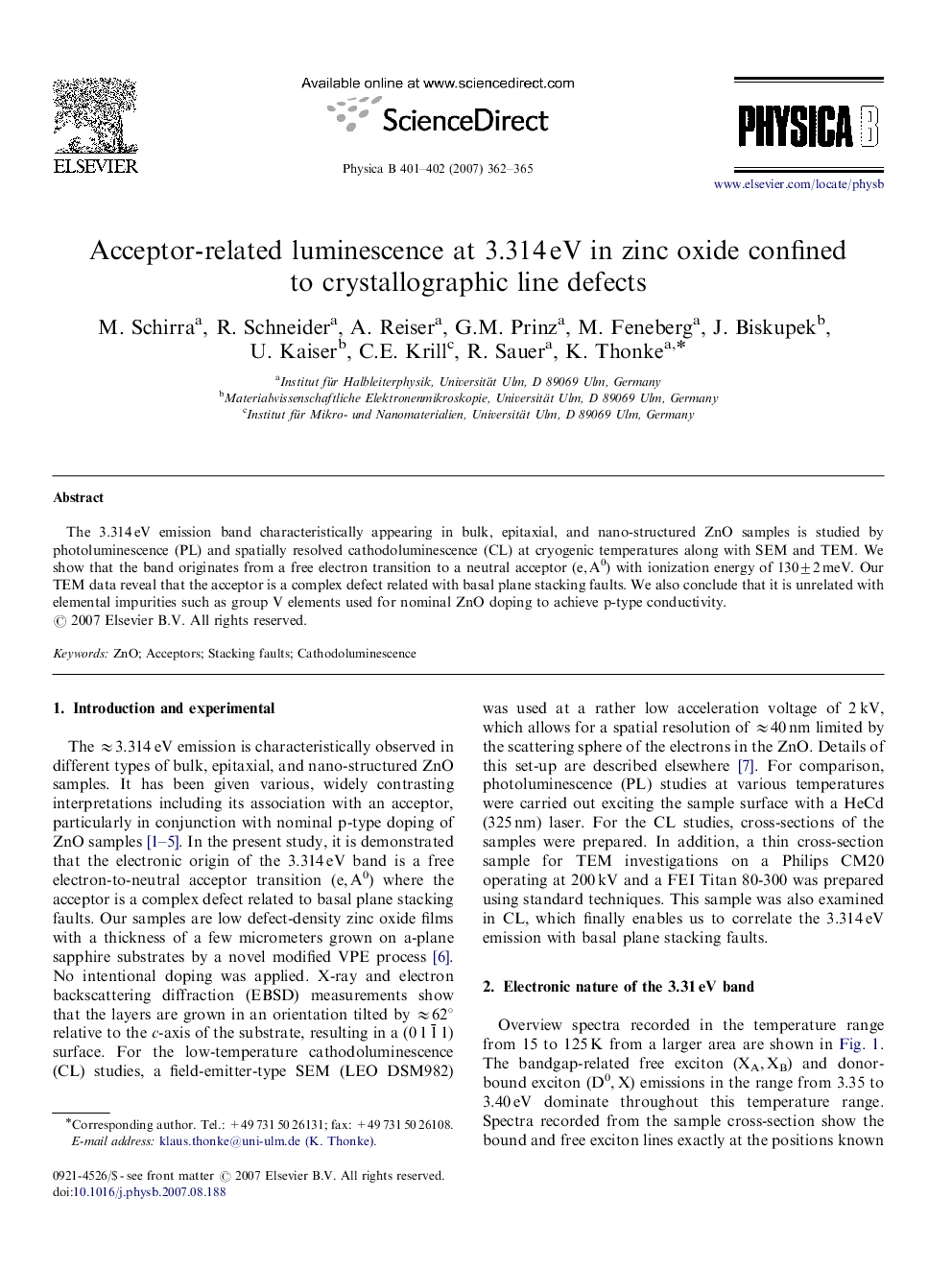| Article ID | Journal | Published Year | Pages | File Type |
|---|---|---|---|---|
| 1815017 | Physica B: Condensed Matter | 2007 | 4 Pages |
Abstract
The 3.314 eV emission band characteristically appearing in bulk, epitaxial, and nano-structured ZnO samples is studied by photoluminescence (PL) and spatially resolved cathodoluminescence (CL) at cryogenic temperatures along with SEM and TEM. We show that the band originates from a free electron transition to a neutral acceptor (e, A0) with ionization energy of 130±2 meV. Our TEM data reveal that the acceptor is a complex defect related with basal plane stacking faults. We also conclude that it is unrelated with elemental impurities such as group V elements used for nominal ZnO doping to achieve p-type conductivity.
Related Topics
Physical Sciences and Engineering
Physics and Astronomy
Condensed Matter Physics
Authors
M. Schirra, R. Schneider, A. Reiser, G.M. Prinz, M. Feneberg, J. Biskupek, U. Kaiser, C.E. Krill, R. Sauer, K. Thonke,
